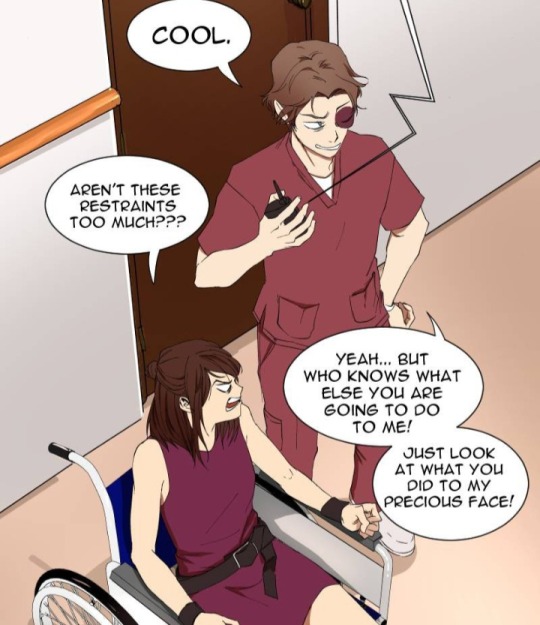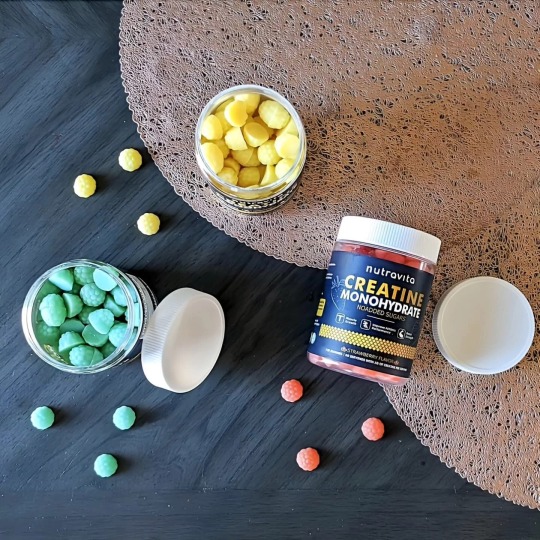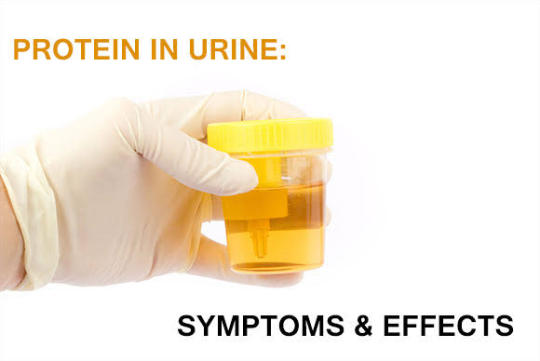#creatinine blood test
Explore tagged Tumblr posts
Text
Understanding Creatinine Blood Test
A creatinine blood test is a test that measures the level of creatinine in your blood. Creatinine is a waste product that is produced by your muscles and filtered out by your kidneys. If your kidneys are not functioning properly, the level of creatinine in your blood will increase.
0 notes
Text
My roommates nurse practitioner called me to lmk that his labs on Tuesday were supposed to have a whole additional blood panel that they forgot to put on the order. He needs to go back for labs this week. I am already stressed like hell over rent. Could we please get $50 to cover this? We don't even have the gas money rn. Dm for proof or details and check out my art blog to commission me @theartistrans
PP--$C--V--kofi
#its his celiac blood panel they forgot if anyone is wondering they tested his creatinine and checked for a few deficiencies the other day#and then forgot the actual major panel they were supposed to do#im glad they called this is just extra bullshit we cannot handle
828 notes
·
View notes
Text
⚕️Interpreting Gallifreyan Bloodwork
This guide is for use on Gallifreyans and Time Lords only. Always seek your human advice from human health providers.
🩸 How Gallifreyan Bloodwork Differs from Humans
Gallifreyan blood is vastly different from human blood due to triple-helix DNA, dual-heart circulation, and the presence of artron and lindos compounds. While some human blood tests can provide limited insights, many are ineffective, requiring Gallifreyan-specific diagnostics for accurate interpretation.
🧪 Blood Tests & Their Efficacy
Human Tests:
Venous Blood Gas (VBG) (Acid-base balance, oxygenation) ✅ Useful for pH, glucose, electrolytes, lactate.
Arterial Blood Gas (ABG) (Oxygenation accuracy) ❌ No advantage over VBG in Gallifreyan physiology.
Full Blood Count (FBC) (RBCs, WBCs, platelets) ❌ Useless—Gallifreyan cells do not match human equivalents.
Urea & Electrolytes (U&E) (Kidney function) ✅ Detects chloride (Cl⁻), creatinine, magnesium (Mg²⁺), potassium (K⁺), sodium (Na⁺).
Troponin (Heart damage/disease detection) ✅ Detects Gallifreyan troponin levels to assess myocardial strain.
Brain Natriuretic Peptide (BNP) (Heart failure monitoring) ✅ Detects NT-proBNP, useful for evaluating dual-heart strain.
Group & Save (G&S) (Blood typing for transfusions) ❌ Useless—Gallifreyan blood groups are House-specific and not compatible across Houses.
Liver Function Test (LFT) (Liver enzyme assessment) ✅ Detects ALP, GGT, ALT, AST to monitor liver health, particularly in relation to lindos metabolism and toxin exposure.
International Normalised Ratio (INR) (Clotting rate) ❌ Useless—Gallifreyan clotting mechanisms differ from human systems.
Specialised Gallifreyan Tests:
Z-Cell Count (Immune response monitoring) ✅ Essential for assessing general and specific immune function.
Artron Levels (Time-energy exposure, immune activation, healing response) ✅ Essential for assessing infection, injury healing, psionic function, and Time Vortex exposure.
Lindos Levels (Regenerative activity indicator) ✅ Detectable only before, during, or after regeneration. Presence at other times is abnormal and suggests systemic failure or forced regeneration attempts.
House Blood Testing (Genetic matching, transfusion compatibility) ✅ Detects House-specific protein markers, ensuring safe transfusions.
Platelet & Clotting Factors (Coagulation health, haemodynamic stability) ✅ Excess platelets indicate haemoinstability, increasing the risk of multiple embolisms and stroke, particularly in cases of aspirin poisoning or anticoagulant dysfunction.
🔬 Gallifreyan Blood Reference Ranges & Abnormalities
pH (VBG/ABG) (Acid-base balance, metabolic function)
🟢 Normal: 7.1 – 7.4 🛑⬆️ Higher pH suggests metabolic alkalosis, respiratory bypass activation, or regenerative instability. 🛑⬇️ Lower pH may indicate acidosis, systemic infection, or artron overload.
Glucose (Energy metabolism, regeneration status)
🟢 Normal: 3.0 – 6.5 mmol/L 🛑⬆️ High glucose suggests lindos activation, metabolic shifts from regeneration, or time-energy instability. 🛑⬇️ Low glucose suggests systemic metabolic failure, starvation, or hypoartronosis.
Lactate (Metabolic function, regeneration status)
🟢 Normal: 0.5 – 2.0 mmol/L 🛑⬆️ High lactate suggests metabolic distress, post-regeneration recovery, or artron dysregulation. 🛑⬇️ Low lactate suggests poor energy reserves or extreme starvation.
Troponin (Heart damage monitoring, dual-heart strain)
🟢 Normal: 0.01 – 0.15 ng/mL 🛑⬆️ High troponin suggests dual-heart strain, pre-regenerative cardiac failure, or bypass overuse.
NT-proBNP (Heart failure marker, circulation monitoring)
🟢 Normal: 0 – 500 pg/mL 🛑⬆️ Elevated levels indicate early-stage heart failure, one heart compensating for another, or cardiac stress.
Z-Cell Count (Immune response, infection monitoring)
🟢 Normal: 5,000 – 15,000 mcL 🛑⬆️ High Z-cell counts suggest active infection, systemic inflammation, or immune hyperactivation. 🛑⬇️ Low Z-cell counts indicate immunosuppression, chronic illness, or psionic burnout.
Artron Levels (Infection, healing, time-radiation exposure)
🟢 Normal: 500 – 4000 mcL (higher baseline in Time Lords) 🛑⬆️ 4000+ mcL suggests hyperartronosis (psionic overactivity, radiation exposure, tissue repair). 🛑⬇️ Below 500 mcL suggests hypoartronosis (immune suppression, tissue degeneration, metabolic failure).
Lindos Levels (Regeneration marker, biological restructuring)
🟢 Undetectable unless regenerating 🛑⬆️ Presence outside of regeneration suggests forced regeneration, internal instability, or pre-regenerative stress response.
Platelet & Clotting Factors (Haemostasis, stroke risk)
🟢 Normal: Variable based on individual regenerative state 🛑⬆️ Excess platelets suggest haemoinstability, aspirin poisoning, or embolism risk. 🛑⬇️ Low platelets indicate clotting failure, possible regenerative exhaustion, or internal bleeding risk.
📌 Key Takeaways for Bloodwork Interpretation
✔️ Z-Cells are elevated in Gallifreyan immune response.
✔️ Artron levels increase in infection, injury healing, and radiation exposure. Time Lords naturally have higher baseline artron levels than other Gallifreyans.
✔️ Lindos should only be present before, during, or after regeneration. Presence at other times is a major red flag.
✔️ Hyperartronosis and Hypoartronosis can cause severe neurological, metabolic, and cardiovascular consequences.
✔️ House-matching is essential for blood transfusions. Mismatched blood leads to systemic failure.
✔️ Clotting instability can cause multiple embolisms or stroke, requiring monitoring in cases of anticoagulant use or regenerative dysfunction.
---
📚 Clinical Case Studies
Now you know absolutely everything about Gallifreyan bloodwork, you can apply them to some simple clinical scenarios. There are three fully explained case studies, followed by two additional scenarios for you to think about.
🩺 Case 1: Post-Regenerative Complications
📝 Patient Background & Presentation: Patient is a Time Lord, 918/3rd generation, Newblood. They present 10 hours post-regeneration with severe fatigue, dizziness, difficulty walking, and pallor. They complain of "feeling wrong in my own body."
🧪 Tests Ordered: Venous Blood Gas (VBG), Lactate levels, U&E (Electrolytes & Kidney Function), Liver Function Test (LFT), Artron & Lindos Levels
📊 Lab Results: - pH: 7.08 (⬇️Acidosis) - Lactate: 5.6 mmol/L (⬆️Elevated) - Sodium (Na⁺): 128 mmol/L (⬇️Low) - Potassium (K⁺): 3.1 mmol/L (⬇️Low) - Magnesium (Mg²⁺): 0.9 mmol/L (⬇️Low) - Lindos: 14,500 mcL (⬆️Very High) - Artron: 650 mcL (⬇️Low)
🩸 Interpretation: - The low artron levels and high lindos levels indicate post-regenerative instability, where metabolic processes have not fully stabilised following regeneration. - The elevated lactate and acidosis suggest impaired metabolic clearance, possibly due to lingering regenerative strain. - The electrolyte imbalances (low sodium, potassium, and magnesium) are contributing to the patient's dizziness, weakness, and fatigue.
💡 Diagnosis: Post-Regenerative Metabolic Instability with Hypoartronosis
🩺 Case 2: Time Travel Incident
📝 Patient Background & Presentation: Patient is a Time Lord scientist, 402/1st generation, Oldblood. They were admitted following a collapse mid-experiment after direct exposure to a raw time vortex rift. Unconscious upon arrival, GASS score rapidly deteriorating.
🧪 Tests Ordered: Venous Blood Gas (VBG), Lactate levels, Z-Cell Count, Artron & Lindos Levels, Liver Function Test (LFT)
📊 Lab Results - pH: 7.25 (⚖️Normal, slightly acidic) - Lactate: 4.3 mmol/L (⬆️Elevated) - Z-Cell Count: 13,800 mcL (⚖️Normal) - Artron: 8,900 mcL (⬆️Very High) - Lindos: <50 mcL (⚖️Normal) - ALT/AST: Slightly elevated (⬆️)
🩸 Interpretation: - Critically elevated artron levels suggest hyperartronosis due to raw time-energy exposure. This has led to neurological overload, explaining the collapse and psionic disturbances. - Elevated lactate suggests tissue stress and impaired metabolic clearance, likely due to the overload of artron. - Liver enzyme elevation indicates mild systemic strain but not full organ failure.
💡 Diagnosis: Acute Hyperartronosis Due to Uncontrolled Time-Energy Exposure
🩺 Case 3: Severe Cardiac Distress
📝 Patient Background & Presentation: Time Lord ambassador, 2752/7th generation, Oldblood. The patient was admitted with chest pain, dizziness, palpitations, and difficulty maintaining balance. Heart rhythms are synchronous.
🧪 Tests Ordered: Troponin, NT-proBNP (Heart failure marker), Venous Blood Gas (VBG), Z-Cell Count, Electrolytes (U&E)
📊 Lab Results - pH: 7.38 (⚖️Normal) - Troponin: 0.22 ng/mL (⬆️Elevated) - NT-proBNP: 710 pg/mL (⬆️High) - Z-Cell Count: 6,900 mcL (⚖️Normal) - Potassium (K⁺): 5.8 mmol/L (⬆️Elevated)
🩸 Interpretation & Diagnosis: - Elevated troponin and NT-proBNP levels confirm cardiac distress, likely due to strain on both hearts attempting to compensate for each other. - Elevated potassium suggests possible metabolic involvement contributing to electrical disturbances in heart function. - Synchronous heart rhythm and symptoms indicate a high risk of impending heart/s failure.
💡 Diagnosis: Severe Dual-Heart Strain with Electrical Instability
🤔 Self-Interpretation Cases
🩺 Case 4: Post-Surgery Issues
📝Patient Background & Presentation: Patient is a Time Lord, 1890/5th generation, Oldblood. An hour ago, they underwent surgery to correct a post-regenerative issue in limb attachment, which required anaesthesia and a blood transfusion. Since surgery, they have had a rapid deterioration, with confusion, severe fever, and difficulty breathing.
🧪 Tests Ordered: Venous Blood Gas, Z-Cell Count, Liver Function Test, Electrolytes (U&E), Artron Levels
📊 Lab Results: - pH: 7.02 (⬇️Severe Acidosis) - Lactate: 6.1 mmol/L (⬆️ Critically Elevated) - Z-Cell Count: 18,200 mcL (⬆️Hyperactivation) - Liver Enzymes: Critically elevated (⬆️) - Sodium (Na⁺): 121 mmol/L (⬇️Dangerously low) - Artron: 9,200 mcL (⬆️ Very high)
💡 Questions to Consider
What could be a potential cause/diagnosis?
What does the elevated Z-cell count indicate about the immune response?
How does House-specific transfusion compatibility play a role in this case?
Why are sodium levels dangerously low?
What does the combination of high artron and high lactate suggest about metabolic function?
🩺 Case 5: Accidental Aspirin Ingestion in a Gallifreyan
📝Patient Background & Presentation: Patient is a Gallifreyan, 612/2nd generation. They were found unresponsive after a trip to an Earth hospital to see a friend. They present with swollen extremities and face, severe nosebleeds, petechiae (tiny bruises), slurred speech, and tachycardia.
🧪 Tests Ordered: Venous Blood Gas, Platelet & Clotting Factors, Liver Function Test, Electrolytes, Z-Cell Count, Artron Levels
📊 Lab Results: - pH: 7.45 (⚖️Normal, slightly alkaline) - Platelet Count: 350% above baseline (⬆️Dangerously high) - Liver Enzymes: Moderately elevated (⬆️) - Potassium (K⁺): 3.0 mmol/L (⬇️Low) - Z-Cell Count: 22,400 mcL (⬆️ Severe immune response) - Artron: 5,700 mcL (⬆️ Elevated, systemic activation detected)
💡 Questions to Consider:
What could be a potential cause/diagnosis?
Why is platelet count dangerously high?
How does aspirin toxicity affect Gallifreyan haemostasis differently from humans?
Why are Z-cell and artron levels elevated at the same time?
How does the presence of left-side weakness and slurred speech relate to this case?
Medical Guides These are all practical guides to assessing and treating a Gallifreyan in an emergency or medical setting.
⚕️💕Gallifreyan CPR
⚕️👽Gallifreyan Assessment Scoring System (GASS)
⚕️👽ABCDE Assessment
⚕️⚠️Sepsis Emergency Response (SER)
⚕️⚠️Severe Trauma Protocol
⚕️🌡️Gallifreyan Pyrexia
⚕️🔮Psionic Emergency Pathways
⚕️✨Post-Regeneration Management
⚕️🩸Interpreting Gallifreyan Bloodwork
⚕️👶Gallifreyan Paediatric Emergencies
Any orange text is educated guesswork or theoretical. More content ... →📫Got a question? | 📚Complete list of Q+A and factoids →📢Announcements |🩻Biology |🗨️Language |🕰️Throwbacks |🤓Facts → Features:⭐Guest Posts | 🍜Chomp Chomp with Myishu →🫀Gallifreyan Anatomy and Physiology Guide (pending) →⚕️Gallifreyan Emergency Medicine Guides →📝Source list (WIP) →📜Masterpost If you're finding your happy place in this part of the internet, feel free to buy a coffee to help keep our exhausted human conscious. She works full-time in medicine and is so very tired 😴
#doctor who#dr who#dw eu#gallifreyans#gallifrey institute for learning#Time Lord biology#GAP Quick Guides#whoniverse#GIL: Biology#gallifreyan biology#GIL: Species/Gallifreyans#GIL#GIL: Biology/Medical
33 notes
·
View notes
Text
Long COVID continues to evade diagnosis through lab tests - Published Aug 12, 2024
NEW YORK, Aug. 12 (UPI) -- Blood and urine tests are ineffective for diagnosing long COVID -- a constellation of long-term symptoms such as chronic pain, brain fog, shortness of breath and intense fatigue, a new study shows.
Without a clear tool to detect and treat the lingering illness, it remains "a major public health burden," researchers noted, affecting millions of people worldwide and significantly altering quality of life.
The new study, funded by the National Institutes of Health Researching COVID to Enhance Recovery (RECOVER) Initiative, was published Monday in Annals of Internal Medicine.
Because few large studies looked at standardized laboratory tests as a way to help diagnose long COVID, researchers decided to examine results of 25 measurements in more of than 10,000 adults enrolled in the RECOVER trial. Launched in 2021, this trial received $1.15 billion in congressional funding. At the outset, participants underwent blood tests and were deemed eligible whether or not they had a previous infection of SARS-CoV-2.
Researchers followed them with surveys every three months and laboratory samples at six, 12, 24, 36 and 48 months after infection or the date of a negative test result.
In comparing responses to questionnaires and routine test outcomes, researchers assessed whether SARS-CoV-2 resulted in repeated laboratory abnormalities regardless if participants had symptoms.
The findings basically revealed little, said the study's lead author, Dr. Kristine Erlandson, a professor of medicine and epidemiology at the University of Colorado Anschutz Medical Campus in Aurora. That's because the laboratory results were inconclusive.
However, she and co-researchers recommended in their study report that clinicians still perform routine clinical tests to rule out other treatable causes of the symptoms in post-acute sequelae of COVID-19, the scientific name for long COVID.
Researchers also uncovered evidence to bolster the notion that SARS-CoV-2 could contribute to the risk of diabetes independent of long COVID -- a link found early in the pandemic.
Individuals with prior SARS-CoV-2 also had higher urine albumin to creatinine ratio. This indicator of early kidney disease has shown an association with cardiovascular conditions in other populations.
Continuing inflammation may be a possible explanation for smell and taste disruptions and post-acute sequelae of COVID-19, researchers said.
"The diversity of symptoms may be one of the reasons that we have difficulty in truly understanding why some people develop long COVID and ultimately how we can treat it," Erlandson said.
"Long COVID is a condition currently defined by symptoms and physical exam findings, not by abnormal routine laboratory measures," she added.
"Similarly, providers should certainly not dismiss a diagnosis of long COVID based on normal clinical laboratory values."
In an accompanying editorial, researchers from Johns Hopkins University School of Medicine in Baltimore noted that most significant unsolved enigmas of the COVID-19 pandemic pertain to the knowledge, diagnosis and treatment of long COVID.
"When [it is] severe, long COVID can be disabling, resulting in job loss or inconsistent ability to perform other roles, such as caregiving. Even in 2024, long COVID remains common," Drs. Paul Auwaerter and Annukka Antar wrote in the editorial.
"Approximately 1 in 20 U.S. adults reported persisting symptoms after COVID-19 in June 2024, with 1.4% reporting significant limitations The incidence of long COVID is 3.5% among immunized people in the Omicron era, and it can occur after reinfection."
The editorial's writers added that "importantly, acknowledging symptoms with empathy and creating a symptom management plan provides a basis for trust and hope amidst uncertainty."
Read the rest of the report at either link!
#covid#mask up#pandemic#covid 19#wear a mask#coronavirus#sars cov 2#still coviding#public health#wear a respirator
18 notes
·
View notes
Text
I LOVE YOO 220 Thoughts
1. What excites me the most on this episode is, we got a glimpse of how Yui abused Nol in the past! (Not that I enjoy seeing Nol being abused, far from it, but I'm glad we finally see the plot moving) This is the discussion back in ep 150:

And with today's episode, we now see how Yui utilizes her power as the owner of the hospital: interfering with the doctors and nurses' decision, having their license revoked if they try to defy her, rewarding them with money -or anything- if they do as she say... Of course Yui's hand would stay clean if everyone is too scared of her! It really give us a glimpse of how she abused Nol in the past. Ugh. Now I wonder, did he also had the nurse he's close with removed from his sight because of Yui? Did she also gaslighted him into thinking it's his fault? 😒
Hearing Yui's argument is laughable actually. When a patient is unconscious, a doctor has the right to do some tests based on medical judgement in order to reach the correct diagnosis for the right treatment, because a sleeping patient can't tell the doctor what's wrong with them afterall. She has no right to veto as a mother too(?), since Kousuke is already an adult. Now, whether the CEO of the hospital has the right to revoke a medical lisence based on personal opinion -- or not, I can't tell because I don't know the laws. But well, money and power goes a long way, sadly.
2. At least Nol wakes up with the person he care by his side. Kousuke wakes up with no one in sight, and the sound of arguments outside. Quimchee just loves hammering down Kousuke's sign of neglection, huh. As much of an asshole Kousuke is, he's still the victim of abuse just like Nol :(
3.

AW NAH BITCH, STAY AWAY FROM JAYCE. STAY AWAY FROM NOL. JUST GO AWAY, NO ONE WANTED YOU HERE.
4. Now, about the reason why Yui is so adamant not letting Kousuke be tested by a literal professional. Many people has guessed it's because Yui doesn't want anyone to find out Kousuke is not Rand's biological son, but I don't think we're there yet. Hansuke mentioned basic tests; as far as I know, the basic, standard tests don't include blood-type test or DNA test. It usually only covered the potentials of:
Irregularity in blood (haemoglobin, platetet, RBC counts)
Infection (WBC, Lymphocyte counts)
Liver disfunction (AST, ALT)
Kidney disfunction (Creatinin, Urea, Bilirubin)
Diabetes (blood sugar)
Cholesterol-based illness (LDL, HDL, triglycerides)
Irregularity in electrolytes (Na, K, Cl, Ca)
And that's the gist of it. There's not much to get, unless Yui doesn't want anyone to find out Kousuke is actually diabetic? Maybe she inserted diabetes medicines inside his food? Kousuke did say they have personal chefs, maybe they also received Yui's order. I kinda doubt it though, this seem like a stretch.
It's a different story if Hansuke wanted to check the possible substance inside Kousuke's body, though. Hansuke suspected Kousuke is under the influence; it's the easiest answer that could explain Kousuke's abnormal behavior.

This is just some wild theory but I suspect Yui inserted some antipsychotic drugs in his drink or food (remember the family chefs?) to keep Kousuke in check. If Hansuke finds out about it, it will reveal that Yui has been hiding the fact that Kousuke has some mental disorder, and that could jeopardize his position as the new CFO; that's why Yui doesn't want a blood work. Just a guess 💀
Btw, this is Shinae on episode 14 LMAO

Oh Shinae. Now this doesn't seem like a joke anymore ☠️
Oh. WAIT.


💀💀💀
5. [Yui: what has you scrambling around in distress?] [Kou: I can't recall... ] [Yui: Aww that's too bad...]

Look at that sinister smile. She is DELIGHTED Kousuke forgets. Since Yui knew he hit his head on the wall, I think it's safe to assume(?) she knows Kousuke was looking at patient record earlier. She knows which name that triggers him. Does it mean she doesn't want Kou to find out about Nessa (further, what she did to her)? Has Yui always used Kou's "ignorance" (memory issue) about Nessa's fate to let him mock Nol about her disappereance?

Nol you couldn't be more right. I look forward to see Kou finding out he has been mocking Nol's mom's absence when it's his own "dear mother" who "killed" her. The devastation...
6. I still don't get why would Yui throw away Rand's gift. If anything, I think it'd benefit her more if she give it to Kousuke. Something like: praising him, how he's done such a good job being a CFO that his father would give him an early expensive present, gaslight him into thinking it's not enough, but just a little more until he'd truly acknowledge him, etc. I thought he'd be easier to manipulate if he get enough reward (which he clearly didn't get)? It feels like Yui's manipulation is getting old. Idk, I thought a goal would be much sweeter if he get to taste it, so he'd work even harder. But so far, he didn't taste any of it.
But then it hit me. If Kousuke sees the real present, he'd know his father does care about him. He won't need Yui anymore, he'd start to rely on Rand, as in, the person. And Yui doesn't want that. She wants Kousuke to be fully in her control, she wants him to keep relying on Rand's image by her words; that Rand is a cold man who doesn't care about his family unless Kousuke surpassed him. She just... never let Kousuke to be free. (Which is why I realized Nol has the potential to be a much scarier manipulator than Yui, but that's another topic for another day).
7. Yui touching Kousuke's injured hand without apologizing is such a psychopath thing to do: lacking of guilt or empathy.
8. BAHAHA since we're almost at the end of the year, it's nice to see the reference of earlier episode!


Though, could this be a foreshadowing? If Shinae really becomes Kousuke's assistant in the future, would she be included in the future hospital inspection? Would she play a role in uncovering Nol and Kousuke's mistreatment in the hospital? Lol.
9. MEG!! AOEBJDDJ I hope she would return the gift to Kousuke, just like Shinae who return the bible to Nol! Kousuke needs to know Rand is more caring than he seemed and Yui is much more wicked than he thought! This is probably Meg's role as the member of the Black Team: to open Kousuke's eyes that he still has people who care for him as who he is.
And that's it! See you next week 👋
#i love yoo#ily#ily 220#i love yoo webtoon#line webtoon#quimchee#kousuke hirahara#yui hirahara#ily theory#ily analysis
61 notes
·
View notes
Text
Psittacosis
Let's open with a case report, like we're on an episode of house.

Case Report
35 yo otherwise well, suddenly presents with 2/52 of high fevers and a headache (usually this means > 39)
a/w chills and rigours, responsive to medication/presumably panadol and intermittent (would resolve then come back)
no respiratory symptoms
She had neutrophilia and intrestingly, a CRP of merely 30.
CXR revealed nonspecific consolidation in 2 lobes, they followed this up with a CT revealing pretty impressive ground glass opacities (or GGOs)

She was empirically treated on IV tazocin only (I'm used to atypical coverage empirically started if there's even a whiff of resp, which she may not have had symptoms but her CXR confirms this)
eventually she was on referred to the authors, who felt her CT findings with consistent with psittacosis and treated her with doxycycline which resolved her symptoms in 48 hrs
on further history, it was revealed that she had parrots at home, one had died 2 days preceding her symptoms and she was sleeping next to its body at night (crazy)

What is it:
psittacosis is a zoonoses (transmitted by animals, animals = reservoirs), in this case, transmitted by birds. Orthinoses if birds in general, but psittacosis if referred to macaws, parrots etc. YOu can also catch it from chickens and turkeys.
Some what related is Bird fancier's lungs. Which just sounds fancy.. I'm sure it's just an old term.

Bird fancier's lung refers to a hypersensitivty pneumonitis (ILD) caused by bird exposure. DIfferent disease process, but birds is the come denominator. INhaled bird particles
Psittacosis specifically refers to the infective disease process caused by a bacteria. It was 'identified" or reported in the 1870s, when a cluster of 7 swiss patients developed the same symptoms and found to have possessed tropical birds.
Similarly, in the 1930s there was an outbreak in the US with a mortality of up to 20% (80% in pregnant women), also attributed to parrots from South America.
Eventually, with further scientific development, the causative pathogen was identified as chlamydia psittaci, an atypical intracellular organism.
Psittacosis is a significant differential to consider in community acquired pneumonia as it has a high mortality if left untreated. But it is rare, and causes about 1% of cases in the US. Part of this is due to improved hygiene practices and strict importation guidelines of tropical birds.
It's spread through the inhalation of dust with either dried faeces or respiratory secretions from infected birds.
Clinical features
Variable! but the key thing on history is birds
incubation time can be anywhere from 2 days to 20
Flu-like (fevers/chills/myalgias/arthralgias/malaise/headache)
high fevers is key
respiratory symptoms - does not always present as per the case report, and can be mild on spectrum (dry cough) to more severe
if systemic, can also get photophobia, deafness and epistaxis
Rare (particularly where doxycycline or azith are prescribed at a low threshold): hepatosplenomegaly (look out for LFTs), GI symptoms (remember CAP can present with diarrhoea, nausea/vomiting --> always do a CXR)
even rarer: endocarditis or myocarditis, encephalitis or hepatitis (usually the complications of untreated disease)

Increased risk groups:
pet shop owners
bird owners
farmers
zoo, lab workers where birds are kept, vets, avian quarantine station workers
poultry handlers/workers
So ask if they live or work with birds, or had recent exposure.
INvestigations
serology is gold standard - so looking for antibodies in blood tests
it's intracellular - so hard to culture if even possible on standard blood cultures
elevated ESR/CRP may see LFT derangement and creatinine rise in systemic illness
CXR- usually lower lobe changes, if CT is done, you can get pulmonary infiltrates with GGOs
Treatment:
usual culprits for atypical coverage: azithromycin 3 days or doxycycline 100 mg BD for 14/7
Differentials
always broad if systemic features only (also consider IE and other causes of sepsis)
with resp symptoms - legionella, Q fever, mycoplasma, tularaemia (except for tularaemia, the rest are also covered by doxycycline)
In clinical practice, I'm so used to just having atypicals on board for any cases of atypical pneumonia. I really take it for granted. But will consider this differential more myself in cases of PUO - but I feel like there should be at least CXR findings regardless.
Anyway, prognosis is very good so long as it is treated.
Sources:
CDC guidelines
Case Report: Importance of Clinical history in Psittacosis
StatPearls
Wiki
#psittacosis#chlamydia psittaci#community acquired pneumonia#infectious diseases#infectious disease#medblr
10 notes
·
View notes
Text





🎄 I need all the energy I can get this time of year so I've been taking 3 Creatinine Monohydrate nutravita gummies daily! I love taking them for yoga because they work wonders increasing strength, improving performance, muscle recovery and also keep my mind sharp. I've always been a fan of creatine supplements because they have so many benefits for athletic performance and health. Studies have shown that creatinine boosts brain function, fights certain neurological diseases, improves exercise performance, and accelerates muscle growth.Plus they taste delicious - you can get them in blueberry, pineapple or strawberry. My favorite flavor is the pineapple. I simply take 3 gummies daily and I'm set.
💚 I've also been taking Vitamin D3 K2 and Magnesium Glycinate! I take the Vitamin D3 K2 to help my body absorb and transport calcium. This is super important for your bones and teeth - rather than letting the calcium sit in your arteries and other soft tissues in your body. I take the Magnesium glycinate to help my body regulate nerve and muscle function, blood sugar levels and inflammation.
💚 I feel safe taking naturesaid and nutravita supplements because they're always manufactured, tested and bottled in a GMP certified factory. Plus they're vegan, gelatin free, sugar free, non-gmo and gluten-free. To learn more about all the benefits of taking these three supplements you can find them on Amazon.
1. Creatinine Monohydrate
https://amzn.to/3Vts69g
2. Vitamin D3 K2
https://amzn.to/3OsuIjP
3. Magnesium Glycinate
https://amzn.to/411bWb6
💚 https://linktr.ee/supplement999
.
2 notes
·
View notes
Text
Making this post because having seen it earlier would have saved me a major freakout:
If you are taking testosterone, it will change your body chemistry in a way the lab might ping as kidney failure. This is completely natural and harmless.
There's a protein called creatinine, which is a natural byproduct of having muscles. Because it's constantly being produced in the body it can always be tested for, and because it's filtered by the kidneys it can be used as an indicator of how well your kidneys are doing their job.
The most common cause of a sudden increase in blood creatinine is that the kidneys are no longer removing it properly. While creatinine itself is harmless, having it build up in your blood can be a sign that actually toxic substances are also building up, which is a serious health risk.
However.
The other cause of increased creatinine is an increase in muscle mass. More muscles make more creatinine, and the baseline levels in your blood will rise, even with your kidneys working perfectly.
It's not as common, because sudden increases in muscle mass aren't something that just happens -- but testosterone tells your body to build muscle, that's one of its main functions.
Obviously, you should still go to the follow-up. The doctor might want you to take another blood test in a few weeks to make sure your creatinine has stabilised at the new level and isn't still rising. Just know that it's routine and nothing to get worried about.
(This post brought to you by being told to make an 'urgent' appointment and opening the patient portal to see my test results labeled [AKI Alert], and spending a good half-hour panicking about my kidneys before I put together the alternative explanation.)
2 notes
·
View notes
Note
just wanted to say i hope your older kitty with ckd is doing well <3. i have an 18 year old kitty with ckd who was diagnosed at around 16. in addition to the kidney diet dry food, i’ve been putting phos-bind powder in her wet food. since i’ve started that, her levels have been fairly stable. I know others have had similar experiences after using the powder — something to look into if you want/haven’t heard of it already! many cats live long lives with ckd without using the powder too though.
Thanks for the info! Yes I've read a little about phosphorus binders and I'll consider in the future but so far Lily's phosphorus levels haven't been outside normal ranges even when her creatinine was at its highest (3.8, tho her most recent blood test, three weeks after diagnosis and starting treatment, had her creatinine at 2.4). I think we caught the CKD relatively early. I have Lily eating both wet and dry kidney food and getting fluid therapy although even that right now seems more aggressive than necessary and I'm reducing it. Probably Lily will benefit from a phosphorus binder someday and I'll keep an eye on that in her blood test results but I don't think it's necessary right now. I've been reading Tanya's CKD Guide a lot and found it very helpful.
Do you mean the phos-bind helped stabilize phosphorus levels or also the creatinine/BUN?
5 notes
·
View notes
Text
November 12, 2024
Read namaz
Meditated
Exercised
Classes :
Physiology - resting membrane potential- genesis, factors affecting, Gibbs donnan equation, nernst potential, Goldman-hodgkin-katz equation, contribution of potassium and sodium diffusion potentials and chloride movement.
Anatomy - pectoral region - cutaneous and blood supply, mammary glands, pectoralis major and minor, subclavius, clavipectoral fascia, serratus anterior. Axilla - location, shape, boundaries, contents, brachial plexus, erb's palsy, klumpke's palsy, horner's syndrome
Pectoral region dissection!!!!!
Biochemistry lab - normal urine analysis - urinometer, test for calcium, phosphate, ammonia, urea, uric acid, creatinine
Helped seniors to decorate
Watched fourth episode of house MD and learnt about MRSA - methicillin resistant staphylococcus aureus
2 notes
·
View notes
Text
hi guys! so i wanted to give you all this update as to why i have not been posting as much. for the past month i have been working at my job diligently, and at the same time ultimately concerned with my health and wellbeing. i know i made a post a while ago, saying that i was worried about my health and my kidney function, because i am a type 2 diabetic and kidney disease is common in my family. i have visited my new primary care doctor (for those who do not live in the US a primary care doctor is a healthcare provider that practices in general medicine and they are the individual i can go to to get check ups, vaccinations, referrals to specialists etc.) and a blood test as well as a urine test was done just last week.
the results of the blood test, my primary care doctor told me were fine. my urine test, to me told a different story, i noticed that my creatinine in my urine was low. it was at 17 when the reference range is 20 to 275 according to the lab test. anyways, i didn't ask them about my creatinine levels yet because i will be doing another visit with them at the end of this month to discuss over my results and what we will be doing as patient and doctor to make sure that i will be ok.
my blood sugar levels have been excellent. my respiratory is fine. my heart beat is normal. however i just have a really huge concern for my kidney function. until i get to see a kidney doctor who will do a test and the test informs me that i am well then i won't be worrying anymore. right now i am constantly stressing about my kidney function, i have been trying to distract myself with trying to finish writing requests, watching new anime shows, and going to the gym to put my mind off of it, but at the end of the night when my head hits my pillow it is all that i am thinking about.
i am writing this post to you guys, my followers and new followers, because i want for you all to know that i am still here. im still around, and i am trying my hardest to fulfill requests in my inbox and drafts. i am suffering right now from a really bad case of writer's block and stress. i think that is better to be transparent with you guys, and to let you all know what is going on with me.
i feel really bad that im not writing as often as i should be. i just hope, pray, and wish that this writer's block will go away and i will start writing again.
25 notes
·
View notes
Text
right as I was writing a post about getting my health taken care of, Lu's new vet emailed me with his latest test results.
I've known about his liver disease for years, and we treat it with a low copper diet and supplements, but I always suspected his kidneys weren't right, either.
The tests confirm that he's in early stages of kidney disease too. :( My vet also shared my *previous* vet's medical records and shows that he's probably had it since at LEAST 2019, but it was never discussed with me.
SO that sucks.
Unfortunately renal disease is primarily treated with dietary changes, but Lu's already on a special low-copper liver disease diet so it's not just a "change to low protein" case. as far as I can find there's no liver care/kidney care diet that would work for him (he's also allergic to chicken, which is what a lot of kidney care diets are)
and on top of all of that--or because of it, since the REASON i suspected his kidneys had issues were his frequent UTIs--he has a UTI and I have to get it cultured to figure out what antibiotic to give him.
I just spent so much money on these blood tests for my poor old man and can't afford the urine culture yet so of course I feel bad letting it sit for another month until my next paycheck.
hoping I get a tax refund???? i guess???
i'm really annoyed about the previous vets never telling me about his heightened creatinine levels/etc that were indicative of renal disease. Like as far back as 2019, soon after I got him from the rescue, had heightened numbers and they were writing in their notes "suspected renal disease" but never told me. if i thought it meant anything, I would write 'em up for it. :(
9 notes
·
View notes
Text
Captopril for Dogs: Benefits, Dosage, Side Effects, and More
Captopril for Dogs
Captopril is an angiotensin-converting enzyme (ACE) inhibitor commonly used in veterinary medicine to manage heart conditions in dogs, particularly congestive heart failure (CHF) and systemic hypertension (high blood pressure). Initially developed for human use, captopril has found its place in treating canine patients with cardiovascular issues, offering numerous benefits but also requiring careful administration and monitoring due to potential side effects.
Understanding Captopril and Its Mechanism of Action
Captopril works by inhibiting the angiotensin-converting enzyme, which is responsible for converting angiotensin I into angiotensin II, a potent vasoconstrictor. Angiotensin II causes blood vessels to narrow, leading to increased blood pressure and making the heart work harder. By blocking this conversion, captopril allows blood vessels to relax and widen, reducing the workload on the heart and lowering blood pressure. This action is particularly beneficial for dogs suffering from CHF, as it helps to improve blood flow and reduce fluid buildup in the lungs and other tissues.
Benefits of Captopril for Dogs
Managing Congestive Heart Failure (CHF): CHF is a common condition in dogs, especially in older or certain breeds like Cavalier King Charles Spaniels. Captopril helps manage CHF by reducing the resistance the heart faces when pumping blood, thus improving cardiac output and reducing symptoms like coughing, difficulty breathing, and lethargy.
Lowering Blood Pressure: For dogs diagnosed with systemic hypertension, captopril can effectively lower blood pressure, preventing damage to organs such as the kidneys, eyes, and brain, which can result from prolonged high blood pressure.
Improving Quality of Life: By easing the burden on the heart and lowering blood pressure, captopril can significantly improve a dog's overall quality of life. Dogs may exhibit increased energy levels, better appetite, and greater overall comfort as a result of treatment.
Potential Renal Protection: In some cases, captopril may offer renal protection by reducing the progression of kidney disease, particularly in dogs with proteinuria (protein in the urine), which is often associated with high blood pressure.
Dosage and Administration
The dosage of captopril for dogs must be carefully determined by a veterinarian, as it varies depending on the dog's weight, the severity of the condition being treated, and the presence of any other health issues. Captopril is usually administered orally, with or without food, typically two to three times a day.
Typical Dosage: The usual starting dose is around 0.5 to 2 mg per kg of body weight, given every 8 to 12 hours. The dosage may be adjusted based on the dog’s response to the medication and any side effects observed.
Monitoring: Regular monitoring is crucial when a dog is on captopril. Blood pressure, kidney function (via blood tests for creatinine and blood urea nitrogen levels), and electrolyte levels should be checked periodically to ensure the medication is working effectively without causing harm.
Potential Side Effects of Captopril
While captopril can be highly beneficial, it also carries the risk of side effects, particularly if not used correctly. Some of the potential side effects include:
Gastrointestinal Issues: Dogs may experience vomiting, diarrhea, or loss of appetite. These symptoms are usually mild but should be reported to the veterinarian if they persist.
Hypotension (Low Blood Pressure): As captopril lowers blood pressure, there is a risk that it may cause blood pressure to drop too low, leading to weakness, dizziness, or fainting. This is more likely to occur in dogs that are dehydrated or have other underlying health conditions.
Kidney Dysfunction: Captopril can affect kidney function, particularly in dogs with pre-existing kidney issues. It’s important to monitor kidney parameters closely during treatment to avoid exacerbating any renal problems.
Hyperkalemia (High Potassium Levels): Captopril can cause an increase in potassium levels, which can lead to dangerous heart rhythms if not managed properly. Regular blood tests are essential to monitor electrolyte levels.
Coughing: A persistent dry cough is a less common side effect but can occur due to the buildup of bradykinin, a substance that captopril can increase in the body.
Allergic Reactions: Though rare, some dogs may have an allergic reaction to captopril, manifesting as itching, rash, or swelling. Immediate veterinary attention is required in such cases.
Precautions and Considerations
Captopril should be used with caution in dogs with pre-existing kidney disease, dehydration, or electrolyte imbalances. It should not be used in dogs that are pregnant, as it can cause harm to the developing fetus. Additionally, it’s important to inform the veterinarian of any other medications the dog is taking, as captopril can interact with other drugs, including diuretics and nonsteroidal anti-inflammatory drugs (NSAIDs), potentially leading to adverse effects.
2 notes
·
View notes
Text
*Dr. Smita Goel Homeopathy Clinic*
www.thehomeopathyclinic.co.in
Everyone has protein in their blood. The main protein in your blood is called albumin. Proteins have many important jobs in your body, such as helping to build your bones and muscles, prevent infection and control the amount of fluid in your blood.
Healthy kidneys remove extra fluid and waste from your blood, but let proteins and other important nutrients pass through and return to your blood stream. When your kidneys are not working as well as they should, they can let some protein (albumin) escape through their filters, into your urine. When you have protein in your urine, it is called proteinuria (or albuminuria). Having protein in your urine can be a sign of nephrotic syndrome, or an early sign of kidney disease.
Anyone can have protein in their urine. You may be more at risk for having it if you have one or more of the risk factors for kidney disease, such as:
• Diabetes
• High blood pressure
• Family history of kidney disease
When your kidneys are first starting to have problems, and you do not have a lot of protein in your urine, you will not notice any symptoms. The only way to know if you have protein in your urine is to have a urine test. The test for protein in the urine measures the amount of albumin in your urine, compared to the amount of creatinine in your urine. This is called the urine albumin-to-creatinine ratio (UACR). A UACR more than 30 mg/g can be a sign of kidney disease.
When your kidney damage gets worse and large amounts of protein escape through your urine, you may notice the following symptoms:
• Foamy, frothy or bubbly-looking urine when you use the toilet
• Swelling in your hands, feet, abdomen or face
If you are having these symptoms, your kidney damage may already be severe. Talk to your health care provider immediately about what may be causing your symptoms and what treatment is best for you.
If you have diabetes or high blood pressure, the first and second most common causes of kidney disease, it is important to make sure these conditions are under control by homeopathy.

#greater noida#best homeo clinic in indirapuram#homeopathy for ibs#ghaziabad#homeopathy clinics#homeopathy cold treatment in indirapuram#homeopathy doctor#best skin doctor in ghaziabad#homeopathy#homeopathy medicine#best homeopathy clinic in indirapuram#best homeopathy doctor#homeopathy skin allergies treatment in indirapuram#homeopathy skin allergies treatment in noida#homeopathy specialist in indirapuram#homeopathy treatment#laser treatment in indirapuram#skin specialist in indirapuram#indirapuram#child doctor in noida#child specialist in noida#noida news#nursery school in greater noida#greater noida west#noida#ghaziabad latest news#ghaziabadnews#ayurvedic doctor in ghaziabad#wave city ghaziabad#best schools in ghaziabad
2 notes
·
View notes
Text
Lupus?
I have a lot of symptoms which match with lupus. I've had lots of infections this year...8 so far.
I found out yesterday that my mum had a positive ANA (anti-nuclear antibodies) blood test in the 1990s and again in early 2000s. Docs haven't really followed up on this though.
So today I've got put on my big girl pants and sent a message to my GP surgery with all of my symptoms and some pics of rashes and white fingers. I've done this in hope that I am not blown off and told I'm just stressed or anxious.
Like I am anxious about my health because I feel like shit and I've had 8 infections this year. EIGHT!
So I think my anxiety is founded and proportional to the issue.
If they don't offer me an ANA I'm going to pay for one next year. To rule out autoimmune issues if nothing else.
I just can't deal with more medical gaslighting. After being told last time I raised this it was all because I was stressed.
If anyone's interested here are my symptoms:
* Hair loss
* Fatigue (debilitating)
* headaches and migraines
* Joint pain and stiffness and inflammation
* hearing loss
* dry gritty, itchy eyes (in the middle) which water at the edges.
* rash on checks and nose and sometimes chin
* skin which goes red, then pink and then loses pigment although. Leaving white patches.
* Serum creatinine levels at the highest reference point or just over. Have been for over a year.
* stage two liver disease
* cardiomyopathy
* digestive problems
* three recent UTIs
* One recent skin infection
* three recent respiratory infections
* one recent ear infection
* one abnormal ESR recently
* one high CRP recently
* feeling generally unwell often
* apparent but as yet undiagnosed Raynauds.
#medical gaslighting#actually autistic#mental health#plural system#living with cptsd#chronic fаtiguе ѕуndrоmе#functional neurological disorder#autoimmune#systemic lupus erythematosus#lupus symptoms
5 notes
·
View notes
Text
I don't talk about it often on my blog but I have a type of muscular dystrophy called Facioscapulohumeral muscular dystrophy type 1 (formerly known as Landouzy-Dejerine Disease), a genetic/chromosomal disorder that causes degenerative muscle wasting and loss as well as chronic muscle pain. It's one of the more common types of muscular dystrophy (MD) but is still rare, only affecting about 4 in 100,000 individuals, about 1 million people worldwide. FSHD1 is caused by a D4Z4 contraction on your chromosomes, which causes your body to produce too much of the DUX4 protein which is toxic to muscle cells. So the muscle cells in your body can't regenerate properly and end up being slowly replaced by fat cells and connective tissue. FSHD type 2 is more complicated and what causes it is unknown. There is no treatment or cure for either type of FSHD.
FSHD causes muscle weakness that starts in your upper body, particularly the face (facio) shoulders (scapulo) and upper arms (humeral). Most people have onset around age 15-30, but some are born with symptoms (infantile FSHD) and some people have all the genetic/chromosomal traits that would cause FSHD but never develop symptoms. The muscle weakness is almost always asymmetrical with the right side of the body being affected more. In addition to upper body weakness it's also super common for people with FSHD to have "potbellies" due to weak or absent abdominal muscles, have hip weakness and pain, and to have ankle/foot issues due to weakness in the peroneal muscles. 70% of us also have chronic pain. Around 20% of people with FSHD need a wheelchair for mobility. FSHD is not terminal like many other types of muscular dystrophy but some people with severe symptoms may have a shorter lifespan.
There's not as much research on this but people with FSHD also have abnormalities in our eyes and are more likely to have hearing loss. Both my grandmother and my uncle who have FSHD are Deaf or Hard of Hearing and have mild or significant vision loss. People with FSHD tend to have similar facial features and look alike because of how muscle loss affects our facial structure.
I personally don't remember when my FSHD symptoms started but I know it was when I was young. FSHD runs very strongly in my family and my mom noticed my shoulder blades, especially my left shoulder blade, would "wing out". I used to play violin but as my FSHD progressed I couldn't hold the violin or play it properly anymore and had to stop (I tried cello for a hot minute but that was even worse). The nail on the coffin was when I was going through blood tests during the diagnostic process for my Tourette's syndrome and they showed levels of creatinine kinase (a type of protein released when you're dealing with muscle damage or loss) that were 3x the normal amount.
I'm a young adult so my FSHD symptoms haven't progressed far enough to be debilitating yet. But they're still noticeable. I can't reach my arms up high enough to reach certain things (but I'm very tall so that isn't usually an issue for me like it is for shorter people with FSHD). I can't close my eyes all the way when I sleep. I used to play volleyball, but had to stop because of arm weakness. I was teased in middle school for "walking like a stripper" because my hips would swing so far when I walked. I dealt with body image issues (and still do) because of my skinny arms (that I jokingly refer to as cigarette arms because of their shape) and potbelly. I have muscle weakness in my lower legs that leads to me tripping and falling more often, and I get ankle injuries all the time. I also deal with chronic muscle pain in my upper arms and face.
I'm somewhat involved in my local FSHD community, even though it's rare enough that there's only a couple people in it that aren't directly related to me lol. I participated in a big Walk & Roll fundraiser for FSHD and my fundraising team was able to raise more than $2,000 for research, a feat I'm still super proud of, and I was also featured on the @/facesoffshd Instagram account a few years back (I won't link either of those for privacy reasons). There's not really a strong FSHD community online besides on Facebook because most people don't know they're affected by it until they're in their 30s/40s, and that demographic is most likely to use Facebook over other social media. I've tried a couple times to build up a stronger FSHD community here on Tumblr especially when I was younger but it's not taken off.
The awareness ribbon colour for FSHD is orange, and our main "symbol" is an orange slice held over the mouth, representing people who lose the ability to smile because of FSHD. The organization for FSHD in the USA is the FSH Society.
Here's some famous people with FSHD!

[image: a man with a buzz cut and short stubble wearing a gray v-neck t shirt.]
Chip Wilson, founder of Lululemon athletic wear.

[image: a woman with shoulder-length brown hair wearing an off-the-shoulder floral blouse.]
Lexi Pappas, filmmaker.

[image: a woman with long brown hair and glasses sitting in a power wheelchair and wearing a yellow dress with a sunshine pattern.]
Marisa Spain, youtuber and advocate for disability accessibility in outdoor spaces.

[image: a man with short brown hair and a beard playing a mandolin]
Joshua Bergmann, bluegrass singer-songwriter and mandolinist. It's not visible in this photo, but he uses a specially-made arm brace to hold his arms in the correct position to play mandolin.
it makes me sad that the same few conditions consume disability discussions. the disability community is so diverse and I know there are other people out there who have diverse experiences. I think the community needs to do a better job of lifting up the voices of people with rare conditions (or even just conditions that aren't spoken about) I want to hear from people who have different experiences from mine. people with rare diseases often have very unique experiences and it's really shameful that we don't get to hear those voices very often.
anyways, if you have a rare disease (hEDS is not rare) or a condition that isn't talked about often feel free to promote your blog or share something on this post.
#muscular dystrophy#fshd#fshmd#my fshd is the chronic illness i refer to in my bio and carrd btw#and massive shoutout to the people on the bluegrass reddit for telling me about joshua bergmann
782 notes
·
View notes